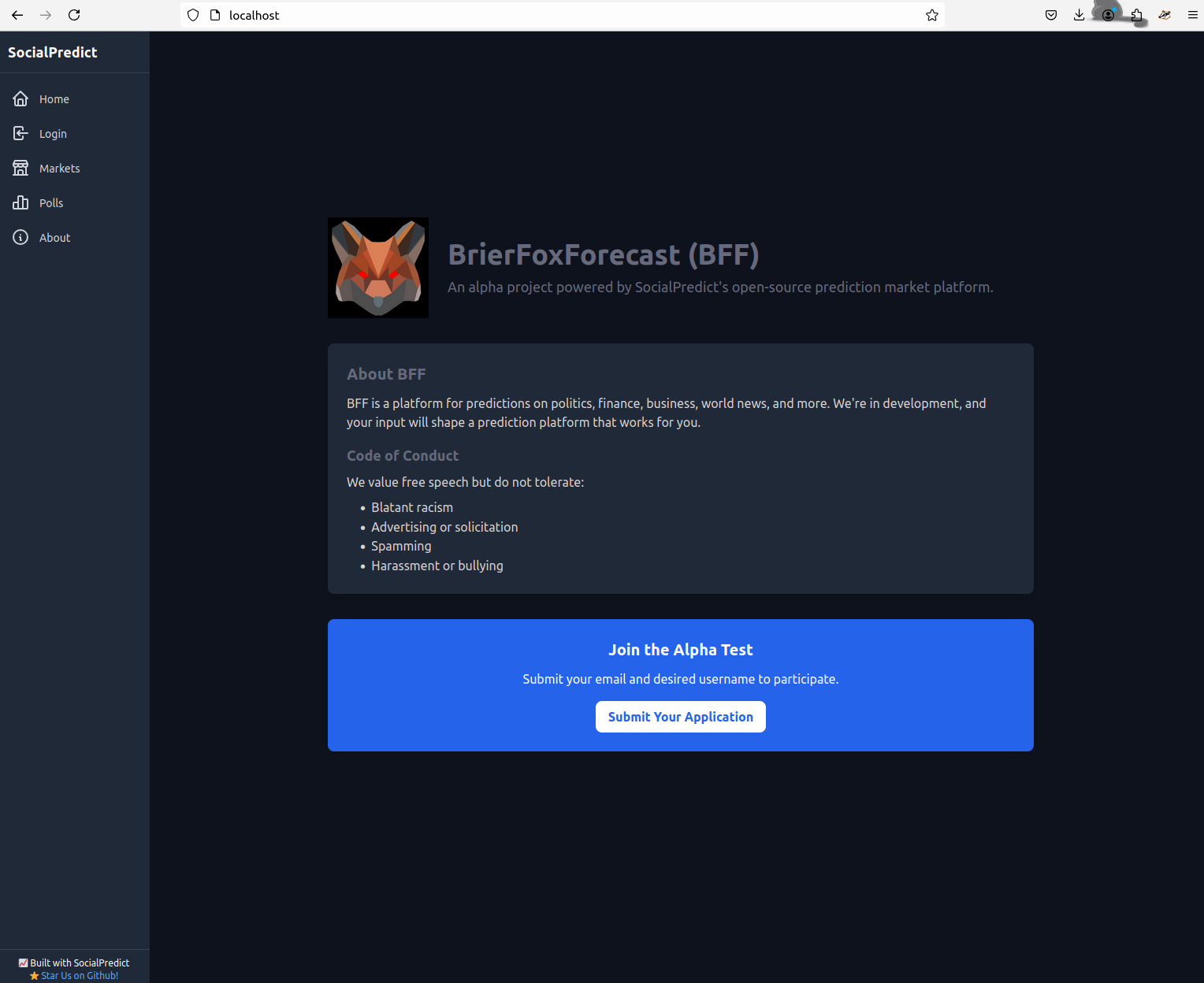Project summary
We are developing SocialPredict, a free and open-source prediction market platform that anyone can use.
The rise of powerful forecasting tools is exciting, but carries the risk of toxicity and misuse. To address these concerns, we propose an open-source, user-friendly platform specifically for walled-off settings such as educational or internal corporate settings. This empowers teachers, managers and smaller groups to:
Forecast future events when material conditions are in flux
Give the world access to an MIT-Licensed, completely free and open source access to a quality prediction market forecasting tool, thereby lowering costs of adoption and raising overall global prediction market user rate.
Allow walled-off instances to be run for educational, corporate, group or non-profit settings where the budget may not be the highest and the need for small community moderation may be high, to reduce the aforementioned potential toxicity.
We hope that by giving people the tools to set up their own prediction market software, we can help make forecasting more popular and less daunting, fostering more critical thinking worldwide during unpredictable times.
At the moment we have an MVP - check it out at brierfoxforecast.com. This has the latest version of the software deployed. Here's a screenshot (from a local machine):

You can check out our repo on GitHub here - if you like it, star it!
We also have instructions for running your own local version of the software here and software that you can already deploy on the web. If you want to try it yourself, instructions are here.
What are this project's goals? How will you achieve them?
Our goals are to have a fully functional, secure, easy-to-use version of the software ready to be deployed online. We're getting there by:
Backend refactoring and testing - the backend works as a proof of concept but it could work better. At the moment, there are still plenty of edge cases where the software could fail, and we obviously want to catch those before lots of people start using SocialPredict.
Testing SocialPredict on our machines and on the web.
By September we should be rolling out SocialPredict to any communities that want to try it out. This will be a great opportunity to see how users “in the wild” interact with the software and we'll probably find lots of bugs to fix, software quirks etc. What fun. But also very important to make forecasting more accessible and popular.
How will this funding be used?
Compensate our backend developers. We need database backups and we need backend refactoring and testing so that SocialPredict works the best it can.
Hire a designer. Good UI and UX will make adoption of SocialPredict easier…and to do that we’d love a designer!
Compensate our frontend developers for hammering out a much improved frontend.
Pay for our DigitalOcean computing costs.
Who is on your team? What's your track record on similar projects?
Our team consists of:
Patrick Delaney, an experienced backend developer, founder of multiple tech conferences, and probability tutor to lemurs.
Brian T. Edwards, who founded Deepvail, a quality assurance ecosystem for high-risk AI systems. He is a prediction market advocate.
Arthur Lacey, a software engineer at Google with 16 years of experience.
Bruno Perković, a backend developer with 2 years of experience.
Osnat Katz Moon, a metascience and forecasting enthusiast with a PhD in science and technology studies. She watches how people make predictions in practice and deploys and tests software.
We are an international team brought together by our love of open-source software, technology, and forecasting. All of us have established track records in what we do - from software development to founding companies to interdisciplinary research - and we are bringing our expertise together to tackle a big, complicated problem and advance the adoption of forecasting.
What are the most likely causes and outcomes if this project fails?
Potential causes of failure:
1. Team loses motivation
2. Lack of community adoption or engagement
Outcomes if the project fails:
1. We will continue development using our own resources, covering server costs through personal contributions or seeking alternative funding sources.
2. Lessons learned will be documented and shared to benefit future similar projects. Even if we fail - and we hope not to - we hope our failure will pave the way for future success.
What other funding are you or your project getting?
Currently, this project is not receiving any other funding, though we have thus far spent $953.24 and 86% of that has been self-funded by Patrick. Our team is committed to creating this open-source platform and has been bootstrapping the initial development. This grant would be the first external funding source, and would help us immensely in taking SocialPredict from a very early production version to something more suitable for widespread adoption.